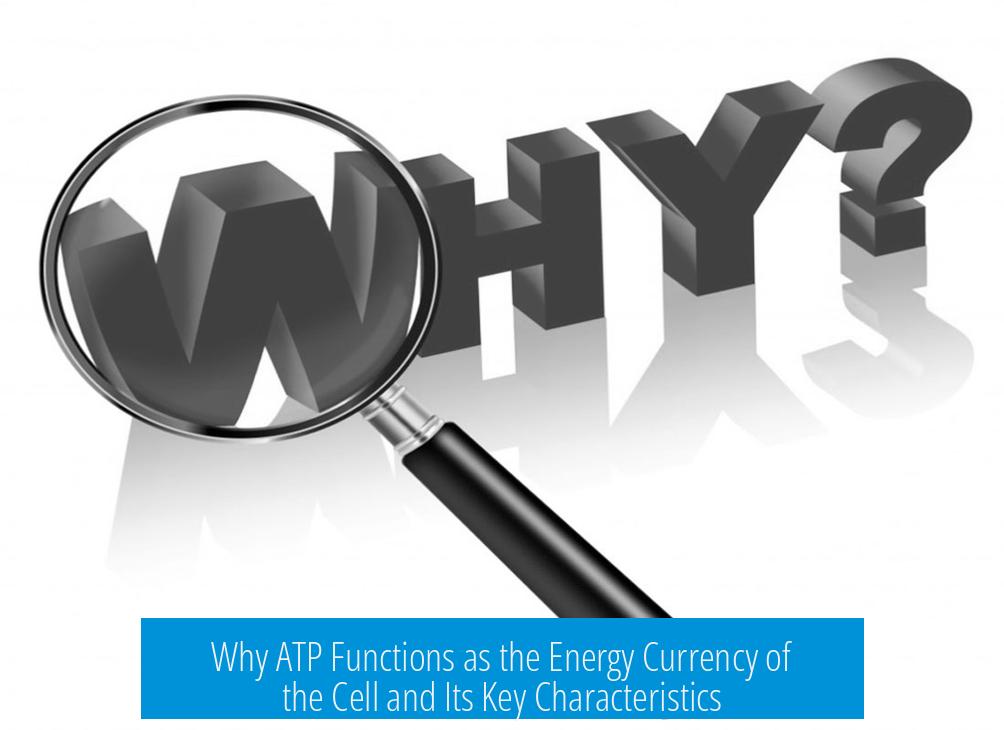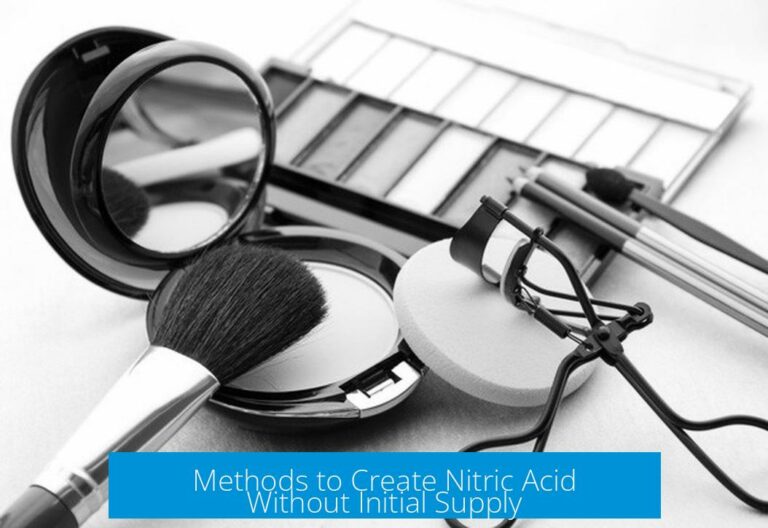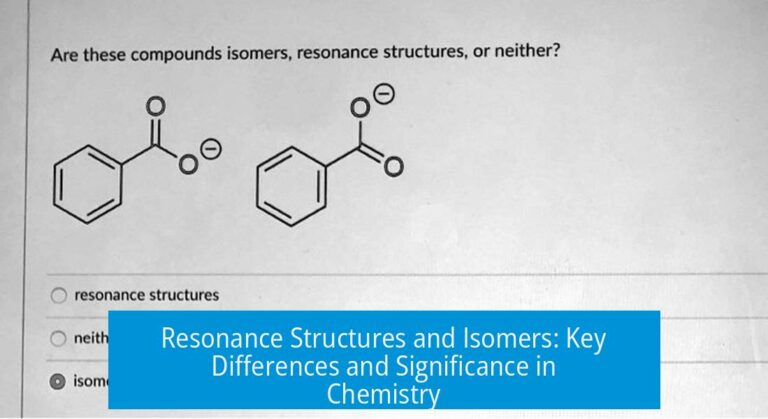Why Is ATP the Energy Currency of the Cell?
Adenosine triphosphate (ATP) serves as the energy currency of the cell because it effectively stores and transfers energy under physiological conditions. ATP’s chemical structure features phosphate anhydride bonds that release moderate, manageable energy upon hydrolysis. This energy is sufficient to drive cellular processes and avoid waste as heat. Additionally, ATP’s stability in water and enzymatic control ensures energy release occurs precisely when needed. Evolution has reinforced the widespread use of ATP due to early adoption and biochemical compatibility.
1. Chemical Characteristics of ATP
1.1 Phosphate Anhydride Bonds and Energy Release
ATP contains two high-energy phosphate anhydride bonds. When hydrolyzed, these bonds release energy, but the amount is modest compared to total bond energy. This moderate energy release is critical because excessive energy would dissipate as heat, which cells cannot harness efficiently.
Such controlled energy release allows ATP to act as a reliable energy donor across many metabolic pathways. Cells transfer this energy to other molecules by phosphorylating substrates or enzymes, enabling various biosynthetic and mechanical activities.
1.2 Stability of ATP in Aqueous Conditions
ATP is stable in aqueous environments despite its potential to hydrolyze spontaneously. The free energy activation barrier is high, restricting unregulated breakdown. This kinetic stability is essential for cellular life, preventing ATP from degrading unpredictably.
Cellular enzymes catalyze ATP hydrolysis selectively. This enzymatic control ensures energy release occurs precisely when and where required. Without this, the efficient use of stored energy would not be possible.
1.3 Availability of ATP and Other Nucleoside Triphosphates (NTPs)
Within cells, ATP and other nucleoside triphosphates (NTPs) such as GTP exist in sufficient concentrations to support metabolic activities. ATP’s availability is a major factor in its role as the primary energy carrier.
Cells synthesize ATP continuously through processes such as cellular respiration and photosynthesis. The presence of these nucleotides as building blocks and energy carriers highlights their multifunctionality.
1.4 Structural Analogy and Functionality
Structurally, ATP consists of an adenosine moiety linked to three phosphate groups. Enzymes recognize the adenosine part (similar to a handle) and catalyze reactions involving the phosphate groups (the active ‘business end’).
This design allows efficient binding and energy transfer, supporting rapid and specific interaction with numerous enzymes.
2. Evolutionary Perspective on ATP’s Role
2.1 Evolution as a Process Without Preference
Evolution does not select for optimal solutions alone. Instead, a range of equally fit solutions forms the Pareto Frontier, representing viable biochemical choices.
ATP emerged as one such solution, not because it is perfect, but because it fits well enough within cellular conditions and metabolic networks.
2.2 Early Adoption and Ubiquity of ATP
ATP likely became the primary energy carrier very early in life’s evolution. All modern cells share this trait, indicating ATP’s involvement from a common ancestor.
This early adoption cemented ATP’s role by supporting key metabolic reactions vital for primitive life forms.
2.3 Lock-in Effect and Evolutionary Constraints
The integration of ATP into fundamental anabolic and catabolic pathways created a lock-in effect. Once established, evolutionary shifts to alternative energy currencies face substantial barriers.
- Switching energy currency requires mutations in multiple enzymes.
- It is easier for new reactions to adapt ATP usage than for organisms to replace ATP entirely.
Such constraints reinforce ATP’s central position in metabolism, making it a stable energy hub.
2.4 ATP Might Not Be Optimal but Is Fixed by Usage
ATP may not be the absolute best molecule for energy storage. However, vast cellular dependence on ATP restricts evolutionary transition. Thousands of metabolic reactions utilize ATP, locking the system in place by functional necessity.
3. Other Considerations
3.1 Use of Other NTPs
Other nucleoside triphosphates such as GTP play roles in specific reactions. Yet, ATP remains the central currency due to its abundance and versatility.
3.2 Limits of Our Knowledge
Understanding why ATP was favored over alternatives at life’s origin remains speculative. Evolutionary pressures and environmental conditions of early Earth are largely unknown.
Similar questions exist regarding the selection of amino acids or the predominance of protein enzymes versus RNA enzymes.
3.3 No Known Definitive Reason
Currently, no definitive biochemical or evolutionary explanation exists to pinpoint ATP’s selection beyond hypotheses.
3.4 Nature and Evolution Are Blind Processes
Nature does not deliberately choose molecules. Random mutations and natural selection shape metabolic pathways. ATP’s role reflects this blind, cumulative process rather than design.
Key Takeaways
- ATP’s phosphate bonds release moderate, usable energy preventing waste as heat.
- ATP is kinetically stable, allowing controlled enzymatic hydrolysis.
- ATP’s early adoption in metabolism created an evolutionary lock-in.
- Other nucleoside triphosphates exist but ATP is central due to availability and compatibility.
- Scientific understanding of ATP’s evolutionary origin remains incomplete.
- Evolution is a blind process explaining ATP’s persistence rather than preference.
Why does ATP release only modest energy when its bonds are broken?
ATP releases modest energy to prevent wasteful heat loss. This controlled energy release allows cells to efficiently use the energy for specific reactions without damaging the cell.
How does ATP remain stable inside the watery environment of the cell?
ATP has high activation energy for hydrolysis, making spontaneous breakdown slow. Enzymes trigger ATP usage only when needed, ensuring it stays intact until energy release is required.
Why is ATP more commonly used than other nucleoside triphosphates?
ATP is abundant and versatile. Cells use it widely because enzymes and pathways have evolved to use ATP, creating a network where switching to another molecule would require complex changes.
Did evolution ‘choose’ ATP as the energy currency?
Evolution did not pick ATP consciously. ATP became central by chance mutations and enzyme adaptations, which created a lock-in effect, making ATP usage widespread and hard to replace.
Is ATP the most efficient energy currency in the cell?
ATP may not be the optimum molecule, but it is fixed in use because so many reactions depend on it. Changing to another molecule would require many simultaneous mutations, which is unlikely.





Leave a Comment